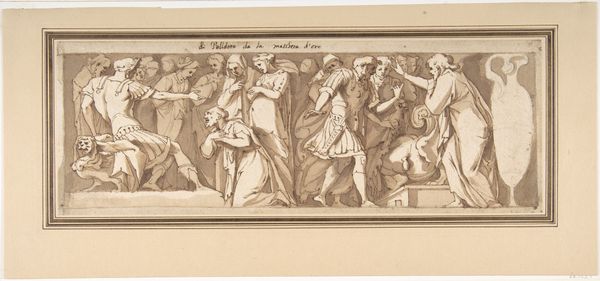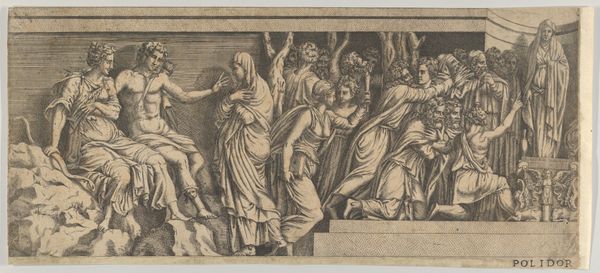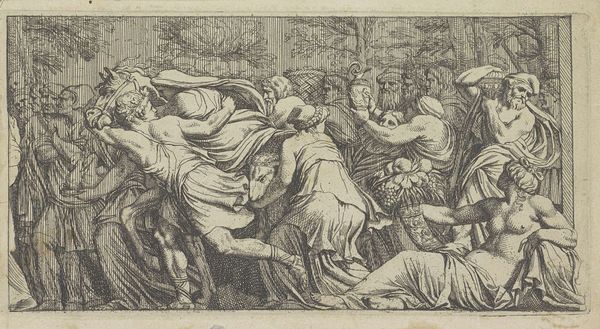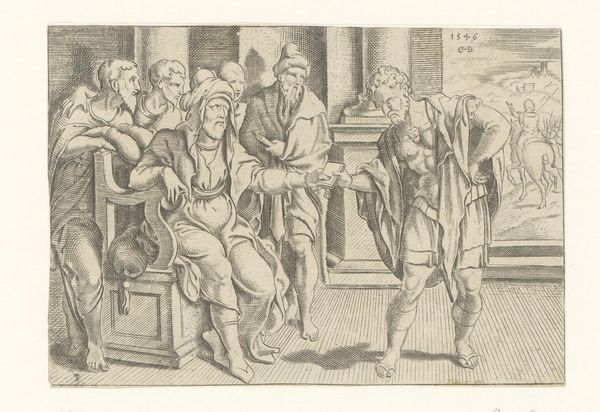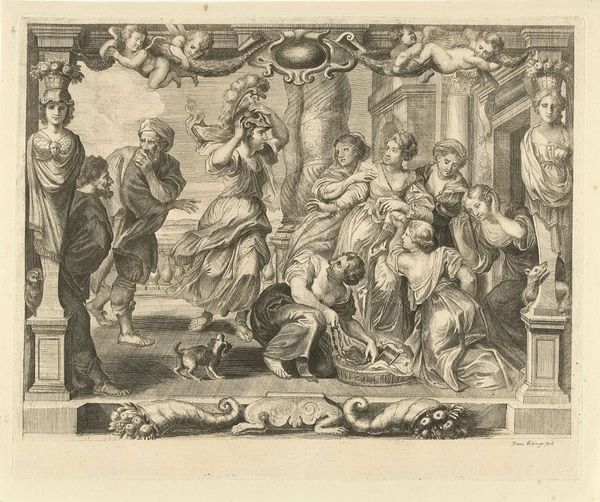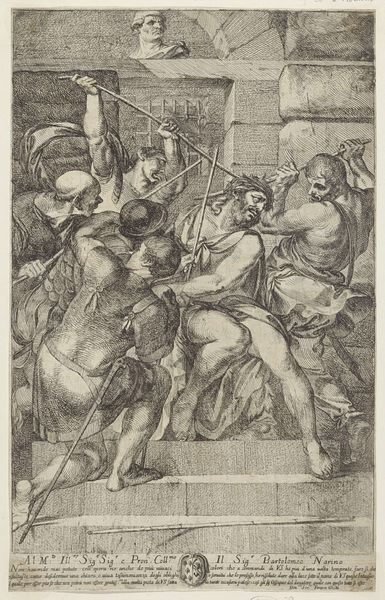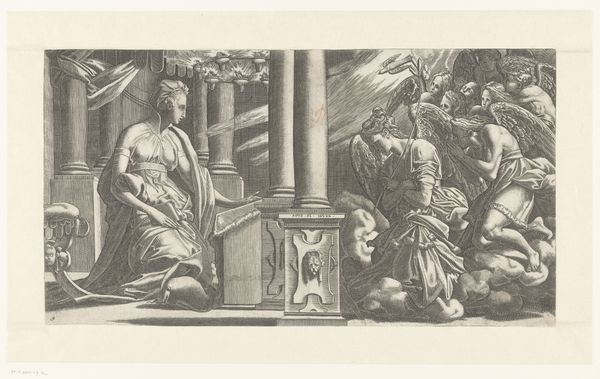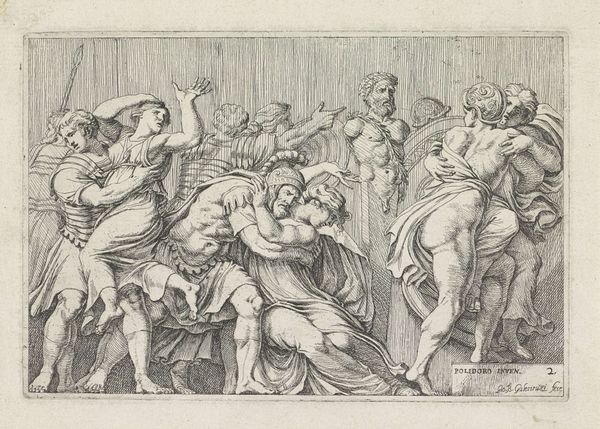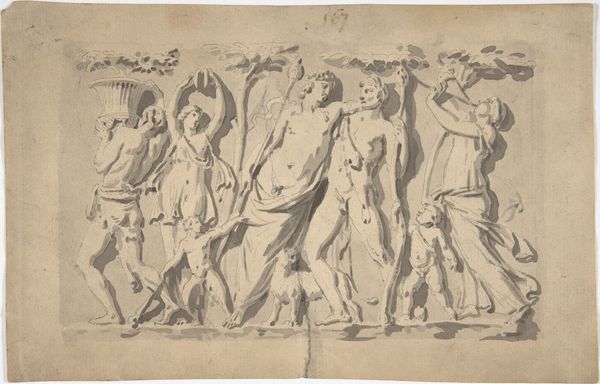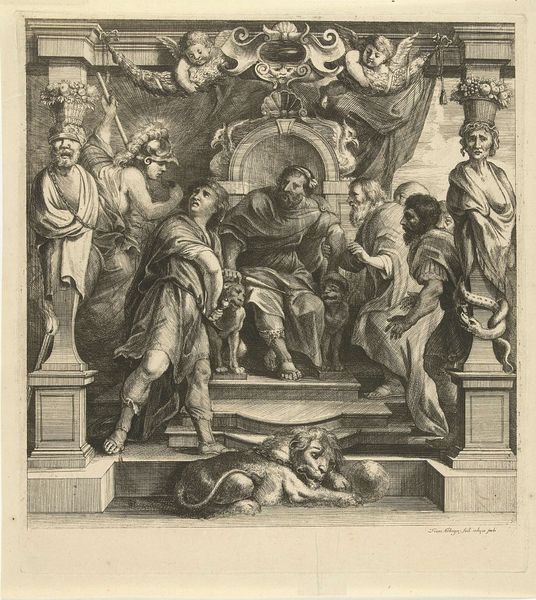
drawing, print, engraving
#
drawing
#
baroque
# print
#
figuration
#
history-painting
#
nude
#
engraving
Dimensions: height 124 mm, width 200 mm
Copyright: Rijks Museum: Open Domain
Editor: This engraving is titled "Vier kariatiden," or "Four Caryatids," by Jean Lepautre, dating to about 1650-1666. The figures seem to blend into the architectural details. What stands out to me is the combination of the human form with what is obviously meant as ornamentation. What can you tell me about it? Curator: Well, let's start with the process of making an engraving itself. Each line, each curve, meticulously etched into the copperplate, reflecting a significant labor investment. Consider how this medium democratized access to images, transforming aristocratic tastes into commodities for a wider, emerging middle class. Editor: So you're saying the act of reproduction changed the artwork's role in society? Curator: Precisely! Also, examine these caryatids themselves. They’re presented as structural supports but simultaneously adorned. Consider the societal implications of objectifying labor, conflating the human form with functional elements. To whom were these prints marketed, and what did their appeal to classicism signify in 17th-century social terms? Editor: I see, it makes me think about gender too. The prominent display of idealized bodies within architecture for the enjoyment of wealthy patrons and perhaps now, more broadly with prints, to those of more moderate means... Curator: Yes! The visual language conveys social stratification. These prints moved architectural aesthetics from specific locations to consumable artworks that can be owned and shown to proclaim the patron’s taste. The availability changes what it means. How might their function, or reception, shift given their transformation from architectural elements to easily circulated prints? Editor: Thinking about the piece this way, seeing it as a produced object for consumption instead of only art, makes me rethink the labor that went into it all. Thank you. Curator: Indeed, viewing the labor and material context allows a new appreciation of these often-overlooked aspects of art history.
Comments
No comments
Be the first to comment and join the conversation on the ultimate creative platform.
